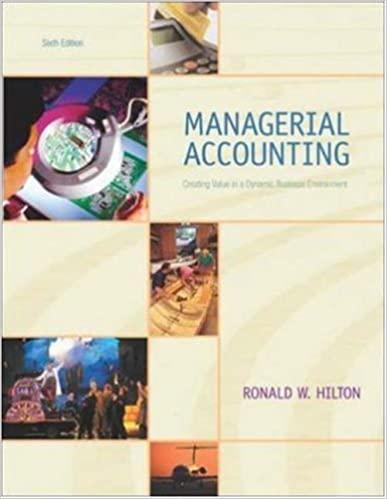Refer to the information given in Problem 17-28 for Huron Chalk Company. Selected information from Huron's year-end
Question:
Refer to the information given in Problem 17-28 for Huron Chalk Company. Selected information from Huron's year-end balance sheets for its first two years of operation is as follows:

Required:
1. Why is the year 1 ending balance in finished-goods inventory higher if absorption costing is used than if variable costing is used?
2. Why is the year 2 ending balance in finished-goods inventory the same under absorption and variable costing?
3. Notice that the ending balance of finished-goods inventory under absorption costing is greater than or equal to the ending finished-goods inventory balance under variable costing/or both years 1 and 2. Will this relationship always hold true at any balance sheet date? Explain.
4. Compute the amount by which the year-end balance in finished-goods inventory declined during year 2 (i.e., between December 31 of year I and December 31 of year 2):
• Using the data from the balance sheet prepared under absorption costing.
• Using the data from the balance sheet prepared under variable costing.
5. Refer to your calculations from requirement (4). Compute the difference in the amount by which the year-end balances in finished-goods inventory declined under absorption versus variable costing. Then compare the amount of this difference with the difference in the company's reported in- come for year 2 under absorption versus variable costing. 6. Notice that the retained earnings balance at the end of both years 1 and 2 on the balance sheet pre- pared under absorption costing is greater than or equal to the corresponding retained earnings balance on the statement prepared under variable costing. Will this relationship hold true at any balance sheet date? Explain.
Data From Problem 17-28:-
Huron Chalk Company manufactures blackboard chalk for educational uses. The company's product is sold by the box at \($25\) per unit. Huron uses an actual costing system, which means that the actual costs of direct material, direct labor, and manufacturing overhead are entered into work-in-process inventory.
The actual application rate for manufacturing overhead is computed each year: actual manufacturing overhead is divided by actual production (in units) to compute the application rate. Information for Huron's first two years of operations is as follows:

Step by Step Answer:

Managerial Accounting Creating Value In A Dynamic Business Environment
ISBN: 9780071113144
6th Edition
Authors: Ronald W Hilton





